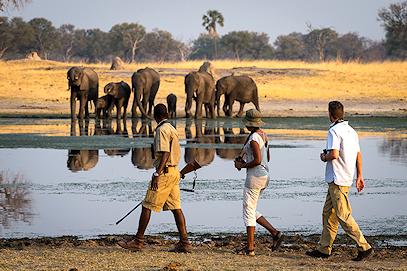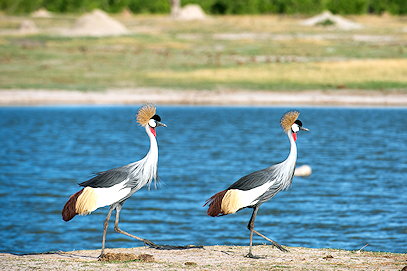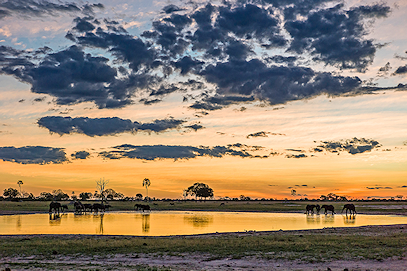Hwange is the largest nature reserve in Zimbabwe, covering 14 650km². It is in the western part of the country between Bulawayo and Victoria Falls. The park was founded in 1928 and named after a local chief, Hwange.
Need Advice?Hwange National Park is on the edge of the Kalahari Desert; the area ranges from dry, sandy desert-like areas to a woody plain dotted with Kalahari bauhinia plants with beautiful flowers, sand camwood, and Zambezi teak.

Two rivers border the park on the northern and southern sides. There is a multitude of pans and dams - ideal for game viewing during the dry winter months. Plush all-inclusive safari lodges like Somalisa and The Hide offer unfettered access to this unique wilderness with a range of safari activities, including guided bush walks, game drives, and night drives. The park is ideal for bird watchers and photographers during the rainy season (end of November until April) for optimal bird-watching opportunities.
The park is renowned for the large elephant herds that dwell within its borders. Visitors can expect to see the elephants during the dry season from April to the start of November. As the elephants travel to the pans in front of the camps, it is easy to observe the interactions between different herds, and, in November, calves are born. Other big game includes buffalo and giraffe.
Hwange is home to predators like lions, leopards, and cheetahs. Although the leopards and cheetahs are elusive and hard to spot, these striking cats are occasionally spotted patrolling the borders of their territory. Young antelope provide predators with an ideal food source during the start of the rainy season. Hwange is also home to one of the most significant populations of Cape wild dogs in Southern Africa.
This park does not just boast an extraordinary population of large animals but also many smaller species. When the larger animals move into the dense mopane woodlands, there is a chance to spot smaller animals like the bat-eared fox, steenbok, and aardvark. Bird watchers will delight in the roughly 400 species of birds that gather near waterholes during the hot summer.
What you'll undoubtedly savor most in Hwange National Park is the reserve's authentic wilderness and abundance of wildlife. Some unique experiences include walking safaris and fishing in the waterways.



Some of the lodges in the park have airstrips, making it easy for smaller aircraft to land here. Charter flights are thus the primary mode of arrival and departure, usually from Victoria Falls or Bulawayo, depending on your previous location. The park is also accessible via a tar road from Hwange town. A 4x4 is required for areas that are harder to access, especially during the rainy season, when muddy roads pose a formidable challenge.
The park remains open throughout the year, with peak season stretching from June to August. During these dry months, many more visitors visit the park because it is easier to spot game in the sparser bush, and most animals use the waterholes close to camps. During the rainy months, from the end of November until March, the veld is lush and green, making it ideal for bird watchers. It is also the perfect time for photographers to snap an image of the dramatic thunderstorms in the late afternoon. Hwange is on the border of the Kalahari Desert. Desert-like temperatures can be expected, with very high temperatures during summer and very low temperatures at night during the winter.
Hwange is home to one of the largest populations of wild dogs. You can also spot other predators like lions, leopards, cheetahs, and the rare brown hyena. During the dry months, visitors will see a lot of elephants, buffalo, and smaller herbivores such as zebra, impala, kudu, and gemsbok. Over 400 species of birds make the park their home during the summer.
Hwange is on the border of the Kalahari Desert with its dry sand. The park has grassland, a savanna, and a woody area with shrubs and trees. The park is rendered lush and green during the rainy season, but during the winter months, the veld becomes dry and brittle.
The park is large, and visitors can spend days exploring it on many gravel roads. A drive through the veld will provide a stunning view of animals and unspoiled nature between coffee breaks and picnic lunches. Wildlife walks, moonlight game drives, fishing, and bird watching are the most popular activities.